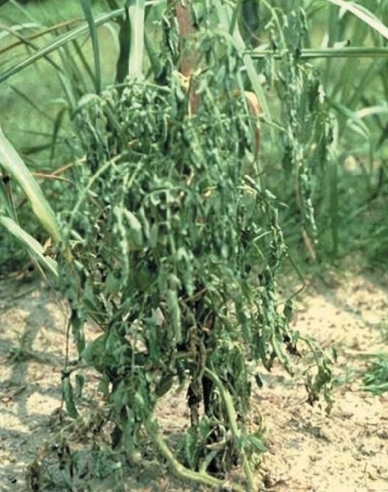Bacterial wilt (Ralstonia solanacearum)
Credit: Biovision-Infonet

(c) David B. Langston, University of Georgia, Bugwood.org

(c) Courtesy of EcoPort, www.ecoport.org
Bacterial wilt has often been reported as the most serious handicap for tomato in the tropics. The disease causes rapid wilting and death of the entire plant without any yellowing or spotting of leaves. Total collapse of the plant usually occurring when temperatures reach 320C and above. Plant wilts while still green. When the stem of a wilting plant is cut across, the pith has a darkened water-soaked appearance, and on squeezing the cut stem, a white, yellow or greyish, slimy exudate may appear. In later stages of the disease, decay of the pith may cause extensive hollowing of the stem.
| What to do: Use resistant varieties (e.g. “Fortune Maker”, “Kentom” and “Taiwan F1”) If only a few wilted plants are found, immediately remove them from the field. Practise long-term crop rotation. A method called “bio-fumigation” is under development from the Australian Center for International Agricultural Research for the reduction and long-term elimination of bacterial diseases from the soil by incorporating especially mustard or radish plants in large amounts into the soil immediately before planting tomatoes or potatoes. This practice is reported to reduce incidence of bacterial wilt by 50-70% in the Philippines (ACIAR 2005/6). |